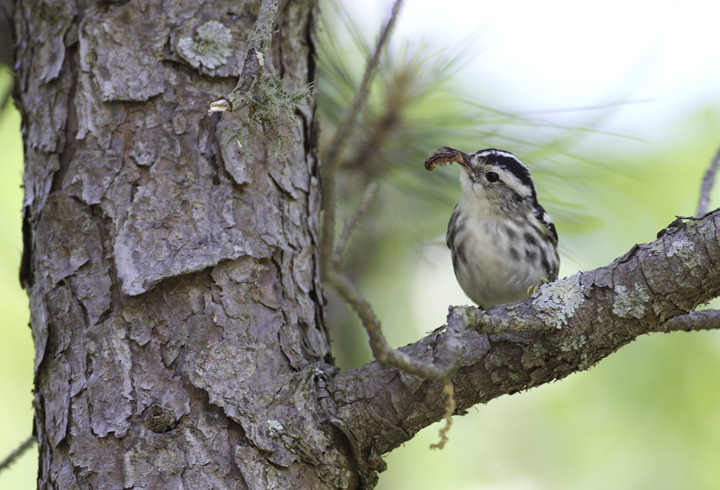Black-and-white Warbler (Mniotilla vaira)

Above: We often hear about the important pest control service that neotropical migrants provide in dining on literally tons of insects. Here we see a Black-and-white Warbler truly earning its keep, devouring a Dog Tick on Assateague Island, Maryland (8/17/2008). Below: A female in western Garrett Co., Maryland (7/30/2005).

Below: A male at Fair Hill NRMA, Cecil County, Maryland (5/7/2005).

Below: A Black-and-white Warbler with prey in Wicomico Co., Maryland (5/11/2011).

Below: A Black-and-white Warbler sings his favorite song in Somerset Co., Maryland (5/11/2011).

Below: A shot showing distinctively patterned undertail coverts (St. Mary's Co., Maryland, 5/3/2008).

Below: A female Black-and-white Warbler in northern Howard Co., Maryland (5/20/2007).

Below: A juvenile Black-and-white Warbler at Soldier's Delight, Baltimore Co., Maryland (9/13/2008). Note the buffy coloration in the flanks.

Below: A Black-and-white Warbler forages along a wooded edge in Idyllwild, Caroline Co., Maryland (9/21/2008).

Below: A Black-and-white Warbler in the morning flight at Assateague Island, Maryland (9/10/2011).


Comments: The foraging behavior of this warbler is unique among warblers: it feeds nuthatch-style, climbing up and down the trunks and branches of trees, probing for insects and insect larvae. Because it need not wait for insects to emerge, it is one of the earliest spring migrants. Its distinctive call sounds like a high-pitched squeaky wheel. This species nests throughout most of eastern and central U.S. and Canada. Surprisingly, it nests on the ground. Females are known to perform distraction displays when disturbed.
